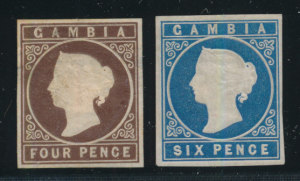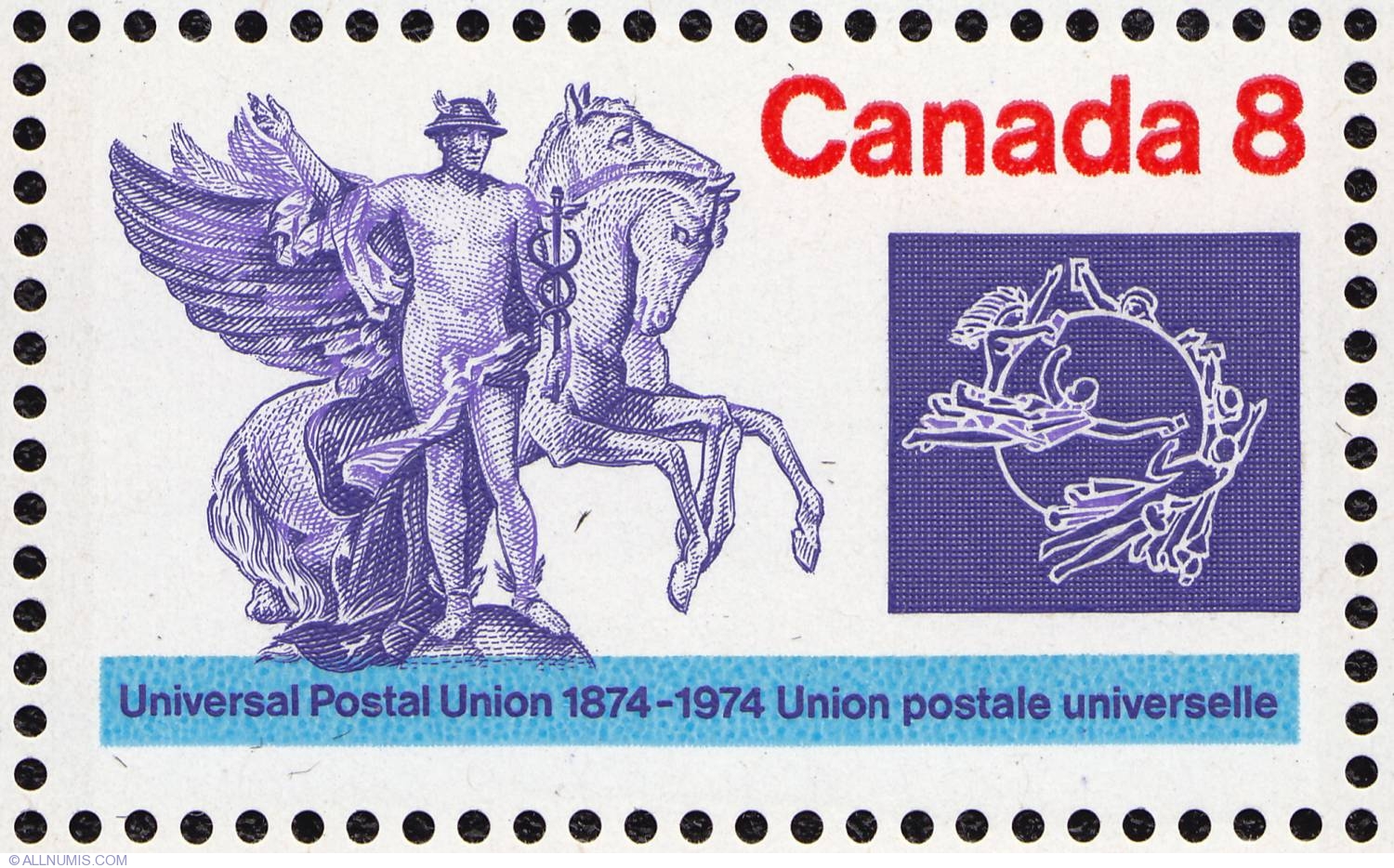Monthly Archives: January 2017
- Posted January 31, 2017Read more »Until about 1950, philatelists were quite content hinging their stamps. The first stamp mounts in the United Stateswere Crystal Mounts, marketed by the H E Harris Company. They were not created because collectors wanted (or could be convinced they wanted, which is they same thing) a better way to mount their stamps. Rather Crystal Mounts were really a pain to use and were marketed solely to add a non-stamp item to the Harris line. Harris found he
- Posted January 30, 2017Read more »The fear of the counterfeiting of postage stamps made for a large number of Nineteenth Century printers' trade offs. The gold standard of anti-counterfeiting technology was line engraved (called intaglio) printing, which, for a special anti-forgery bonus, usually included lathe work. This type of printing rose off the paper and produced a fineness of design that didn't make counterfeiting impossible but made it more difficult and raised the cost (both in time and expertise) to the forgers considerably. Producing line engraved stamps is similar to putting a burglar alarm sign on your front lawn or using the Club in your car. Raising the cost and risk to forgers or thieves means they look elsewhere to earn their living.Gambia didn't
- Posted January 27, 2017Read more »

Chile was one of the last South American countries to be colonized. With little gold or silver to exploit or passive Indians to enslave, the southwest coast of South America was not as attractive to the Spanish invaders as was the rest of the new world. Colonization came later when copper was found, and when the rich Mediterranean style climate showed that European type crops (and especially grapes) could be grown and when steam sailing ships and railroads could link the long narrow nation. Geographically, Chile is a narrow ribbon of a nation averaging 100 miles wide by 2700 mile long. The first stamps of Chile were issued in 1853 and were produced in London. The plates were transferred to Chile and over the next fifteen years numerous printings were made. With "a" numbers, Scott recognizes about sixty different printing, shade, watermark and color varieties putting the first issues of Chile in the same class as the classic Hermes Heads of Greece as among the most super specialized stamps
- Posted January 26, 2017Read more »
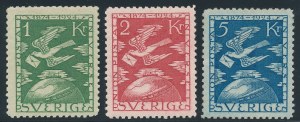 By 1874 the system of international carriage of letters was a mess. Countries had to negotiate postal treaties with each other and most treaties called for cross payments where part of the postage of a letter was remitted by the sending post office to the receiving post office. This was confusing and difficult to keep tabs of but of further complexity was the cross payments to transit countries (say when a letter from the United States landed in England, was sent to Poland and then across land to Russia). Nearly thirty five years after the Penny Black, with world commerce rising, the system of cross payments just wasn't working. It was slowing down communication and as postage rates dropped it was becoming more expensive to account for the letters than to carry them. In 1874 the United States proposed an international congress to discuss the problem and what emerged was an agreement for an organization that was one of the first international cooperation organizations (it was in fact the
By 1874 the system of international carriage of letters was a mess. Countries had to negotiate postal treaties with each other and most treaties called for cross payments where part of the postage of a letter was remitted by the sending post office to the receiving post office. This was confusing and difficult to keep tabs of but of further complexity was the cross payments to transit countries (say when a letter from the United States landed in England, was sent to Poland and then across land to Russia). Nearly thirty five years after the Penny Black, with world commerce rising, the system of cross payments just wasn't working. It was slowing down communication and as postage rates dropped it was becoming more expensive to account for the letters than to carry them. In 1874 the United States proposed an international congress to discuss the problem and what emerged was an agreement for an organization that was one of the first international cooperation organizations (it was in fact the - Posted January 24, 2017Read more »
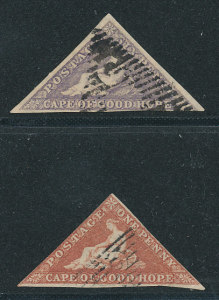 The two most Southern British areas of influence-Australia and South Africa- were also the latest to confederate and begin issuing postage stamps as a single geographic unit. South Africa confederated in 1910 and before that was made up of the Boer dominated Transvaal, Orange Free State, and Stellaland and British dominated Cape of Good Hope. In 1855, Cape of Good Hope became the first stamp issuing country to issue stamps that were not rectangular endearing itself to the first generation of collectors. The Cape was a thriving trading colony and postal communication was well used by the inhabitants. The triangular stamps of the Cape were always popular and sought after from the very earliest days of philately. But popularity in stamps not only requires that collectors want an item, it requires that there be enough of an item in philatelic hands that active trading can take place and collectors can afford to obtain them. In the 1890's a merchant ship arrived in London and a group of sailors
The two most Southern British areas of influence-Australia and South Africa- were also the latest to confederate and begin issuing postage stamps as a single geographic unit. South Africa confederated in 1910 and before that was made up of the Boer dominated Transvaal, Orange Free State, and Stellaland and British dominated Cape of Good Hope. In 1855, Cape of Good Hope became the first stamp issuing country to issue stamps that were not rectangular endearing itself to the first generation of collectors. The Cape was a thriving trading colony and postal communication was well used by the inhabitants. The triangular stamps of the Cape were always popular and sought after from the very earliest days of philately. But popularity in stamps not only requires that collectors want an item, it requires that there be enough of an item in philatelic hands that active trading can take place and collectors can afford to obtain them. In the 1890's a merchant ship arrived in London and a group of sailors - Posted January 23, 2017Read more »
 Foreign collectors believe that collecting United States stamps is the most difficult of all national collecting specialties. The reason is that we make too many major catalog numbers of stamps on which the differences are very hard to distinguish. It starts with the one cent 1851's of which there are seven major catalog numbers of a single design and color, but it really reaches its apotheosis with the Bank Note Issue beginning in 1870 (These issues are called the Bank Note issues because the the US Post Office changed its printing contract to award it to a printing company that also printed currency).There are three main issues of Bank Notes along with numerous reissues and special printings and
Foreign collectors believe that collecting United States stamps is the most difficult of all national collecting specialties. The reason is that we make too many major catalog numbers of stamps on which the differences are very hard to distinguish. It starts with the one cent 1851's of which there are seven major catalog numbers of a single design and color, but it really reaches its apotheosis with the Bank Note Issue beginning in 1870 (These issues are called the Bank Note issues because the the US Post Office changed its printing contract to award it to a printing company that also printed currency).There are three main issues of Bank Notes along with numerous reissues and special printings and - Posted January 20, 2017Read more »
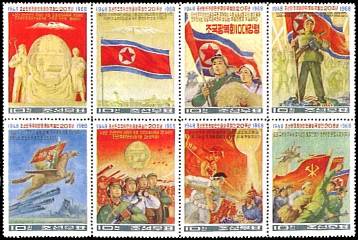 There are few laboratory tests in any environment that so clearly measure the differences in political systems as did North and South Korea. Divided after complete devastation during WW II, the North took a Maoist and Stalinist central planning model and the South a capitalist American model. The results have been so dramatic that if this were a medical study it would have been called off for ethical reasons.
There are few laboratory tests in any environment that so clearly measure the differences in political systems as did North and South Korea. Divided after complete devastation during WW II, the North took a Maoist and Stalinist central planning model and the South a capitalist American model. The results have been so dramatic that if this were a medical study it would have been called off for ethical reasons.
The South has prospered and become one of the wealthier nations in the world whereas the North has gotten to the point where most of the 24 million people who live there are starving and would die without massive food aid. Over the next few years succession issues should affect North Korea. Kim Jong-Un heir is a thirty one year old boy, who has been educated in the west. Whether he has any real power or whether he will move North Korea - Posted January 19, 2017Read more »
Stamp theft, despite the scare stories that you sometimes hear, is really not much of a problem. We rarely have a customer inform us that his stamps were stolen and the APS's stamp theft committee almost never sends out an advisory of a stolen collection. In the 1970's stamp theft was more of an issue than it is now and the change from stamps being an actively stolen commodity to an infrequently pilfered one tells us a lot about the changes in our hobby and our world in the last thirty years.
The reason for the reduction of stamp thefts is threefold. First, stamps have languished in value so that on a "value to difficulty of fencing ratio" they are an inefficient product to steal. High end TVs, computers and jewelry have made much more appealing targets over the last thirty years and stamps that are stolen are often taken as an afterthought of another - Posted January 17, 2017Read more »
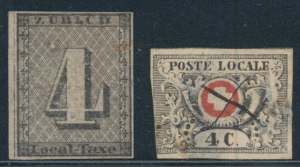 Switzerland was one of the world's first issuers of stamps and the country continues to be one of the most popular philatelic areas. The first issues of Switzerland are called the Cantonals and the first of these was issued in 1846. Switzerland has a federal system of government, similar to the United States in that sovereignty rests with the states which united and set up a constitution governing the relationship between Federal government and the state governments. Over time in the United States, the Federal government has assumed more power and the states less. The same thing has happened in Switzerland except that the Swiss states or Cantons as they are called have retained more of their power vis a vis the Federal government than have the states in the United States.
Switzerland was one of the world's first issuers of stamps and the country continues to be one of the most popular philatelic areas. The first issues of Switzerland are called the Cantonals and the first of these was issued in 1846. Switzerland has a federal system of government, similar to the United States in that sovereignty rests with the states which united and set up a constitution governing the relationship between Federal government and the state governments. Over time in the United States, the Federal government has assumed more power and the states less. The same thing has happened in Switzerland except that the Swiss states or Cantons as they are called have retained more of their power vis a vis the Federal government than have the states in the United States.
In the 1840's the Swiss Cantons were so autonomous that they issued their own postage stamps. - Posted January 16, 2017Read more »
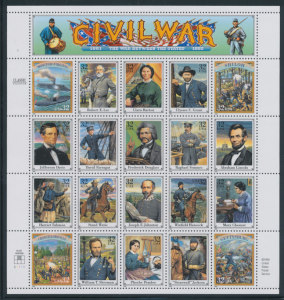 How history is remembered is one of the best ways of determining how a people wishes to understand itself. Currently we are in the midst of the 150th anniversary of the Civil War and this conflict, and the way that it is taught and learned and understood tells us much about ourselves in the early 21st Century. The sheet illustrated above is a USPS 1994 sheet commemorating the Civil War. It is evenly divided between Northerners and Southerners, slaveholders and those who opposed the ownership of human beings. Clearly, 150 years after this great war, which killed nearly as many Americans as all of our other war combined, the consensus that has emerged is that this war was some great cosmic tragedy, two honorable sides on a collision course with no one really at fault. But the Civil War was not inevitable and to believe so is not only a misreading of our history but a misreading of human
How history is remembered is one of the best ways of determining how a people wishes to understand itself. Currently we are in the midst of the 150th anniversary of the Civil War and this conflict, and the way that it is taught and learned and understood tells us much about ourselves in the early 21st Century. The sheet illustrated above is a USPS 1994 sheet commemorating the Civil War. It is evenly divided between Northerners and Southerners, slaveholders and those who opposed the ownership of human beings. Clearly, 150 years after this great war, which killed nearly as many Americans as all of our other war combined, the consensus that has emerged is that this war was some great cosmic tragedy, two honorable sides on a collision course with no one really at fault. But the Civil War was not inevitable and to believe so is not only a misreading of our history but a misreading of human - Posted January 13, 2017Read more »
 Herman Herst Jr.'s book Nassau Street is probably the most readable and enjoyable of all the philatelic canon. It is a series of stories and reminisces about philately in the 1930s and 1940s loaded with good anecdotes about many of the giants of our hobby along with reflections on where the hobby was in the year that the book was published (1960) and where stamp collecting had come from. The book was immensely popular and was on the New York Times' bestseller list for a time after its publication, indicating appeal outside the hobby. Copies are available from used booksellers on Amazon, so, if you want one, there are a few that are still available. But books like this are hard to find, and collectors who came into the hobby after Mr. Herst's retirement have little access to the joys of his philatelic vision.
Herman Herst Jr.'s book Nassau Street is probably the most readable and enjoyable of all the philatelic canon. It is a series of stories and reminisces about philately in the 1930s and 1940s loaded with good anecdotes about many of the giants of our hobby along with reflections on where the hobby was in the year that the book was published (1960) and where stamp collecting had come from. The book was immensely popular and was on the New York Times' bestseller list for a time after its publication, indicating appeal outside the hobby. Copies are available from used booksellers on Amazon, so, if you want one, there are a few that are still available. But books like this are hard to find, and collectors who came into the hobby after Mr. Herst's retirement have little access to the joys of his philatelic vision. - Posted January 12, 2017Read more »
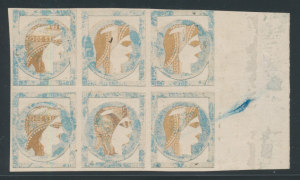 Classic French stamps are among the most interesting. The first issues of France are printed by a method of printing called typography. Unlike engraved plates, typography relies on plates that hold a design by having an ink-holding agent that is applied to the plate do the printing rather than having the metal plate itself hold the ink, as is the case in engraving. Typography is a simpler printing method than engraving, but in the hands of capable printers can produce a fine result. But the non-metal aspect of the printing agent means that wear is rapid, and for this reason typography tends not to be used for large printing orders as the quality of the print tends to degrade as the plates wear. The reason why the printers of the first French issues chose not to engrave their stamps is unclear. Perhaps they were unsure that stamps would catch on and that millions would soon be required, and their decision was based on the fact that typography is far cheaper than engraved. But
Classic French stamps are among the most interesting. The first issues of France are printed by a method of printing called typography. Unlike engraved plates, typography relies on plates that hold a design by having an ink-holding agent that is applied to the plate do the printing rather than having the metal plate itself hold the ink, as is the case in engraving. Typography is a simpler printing method than engraving, but in the hands of capable printers can produce a fine result. But the non-metal aspect of the printing agent means that wear is rapid, and for this reason typography tends not to be used for large printing orders as the quality of the print tends to degrade as the plates wear. The reason why the printers of the first French issues chose not to engrave their stamps is unclear. Perhaps they were unsure that stamps would catch on and that millions would soon be required, and their decision was based on the fact that typography is far cheaper than engraved. But - Posted January 10, 2017Read more »
As stamps become a viable investment, it is natural that a variety of specialized investment advisers have grown up. If you subscribe to some of the stamp newspapers and magazines listed in the bibliography, you will see the advertisements for these; other investment advisers are beginning to solicit clients on the business-pages of local newspapers and in the financial press. It is very difficult to ascertain the expertise of any of these advisers. Like economists, these people must make predictions based on inadequate knowledge about the future. And further, even an excellent record of predictions in the past is no guarantee of success for the future. Generally, philatelists who have done the best in stamps have done so because they themselves have acquired a good measure of philatelic knowledge. Some choose to use the investment advisers as well, but prudence would seem to dictate giving no one carte blanche with your money.
- Posted January 09, 2017Read more »
There are billions of stamps, and only some of them should be part of a reasonable investment strategy. In general, investors should try to stay away from the new issues of any country, be it United States or foreign. Many people have made huge gains by buying up quantities of modern, newly issued stamps that have later turned out to be scarce. But the risks are too high, and the possibility of postal authorities reissuing the stamps if supplies run short always exists. If an investor had bought every new issue since 1960 from major countries, he would still be unable to sell the entire group at a profit. And that is true even though many stamps have sprung up in value. The bulk of philatelic items, perhaps 95 percent or so, never show any significant financial gains.
Above all, stay away from United States new issues. There is an appeal
- Posted January 06, 2017Read more »
When people read the Salamon Brothers report, which maintains that stamps were the third best investment over the decade of the 1970s, ranking behind oil and gold, they expect to see a high percentile increase in the price of stamps on a year-to-year basis. Such an impression is misleading. Most people who avidly watch stocks or commodities know that investment items trade in a relatively narrow band most of the time. Then, for whatever reason-- good news in the case of most stocks and bad news in the case of most commodities-- they sometimes shoot up 20 to 30 percent in a very few days. And often they jump down the same way. Slow, steady progress in financial matters simply does not occur in the trading, though the long-term results may make it seem that way.
Stamps are much the same. A stamp will trade in a very narrow band, then in a
- Posted January 05, 2017Read more »
But there is another almost foolproof stamp investment strategy. It is not for everyone, as it requires patience and knowledge: the scheme requires an investor to immerse himself totally in the study of stamps and find a philatelic specialty that really excites him. The clever investor then obtains all the auction catalogues he can, visits stamp shops, and slowly acquires interesting items for his collection, which he mounts and displays. The stamps and covers in a specialized collection often have a symbiotic relationship to one another: two $50 covers next to each other frequently produce a $200 page. The clever investor makes his collection over a period of years, and sometimes so fools the world into believing that he loves his stamps as a hobby that he fools himself as well. Then he does some very uninvestor-like things like turning down huge profits on his collection because he loves it. More and more, investors are discovering that while they came to philately for the profit, they
- Posted January 03, 2017Read more »
Another investment strategy is a modification of the old cornering-the-market theme. This is for high rollers only, affords considerable risk, but also can be used to advantage by astute speculators. Essentially, the scheme entails buying all of a specific philatelic item that you can and through this means pushing up the price. For example, you and some partners decide that zeppelins selling at $5,000 a set are too cheap, and you purchase all that you can at that price. Approximately 250 sets come on the market each month, so you can see that his would take some money. But the nice part about this plan is that you don't end up buying all of the sets (indeed, usually only a fraction of them), because at every increased incremental level there are some sets that sell to collectors and other investors at slightly more than you are willing to pay.
- Posted January 02, 2017Read more »
Some investors used to look askance at creating a collection. After all, they would tell you again and again, they were not collectors. After a time, however it began to be apparent that making a collection was not only fun, it had some pretty smart investment strategy associated with it. First of all, simply buying stamps that are touted in the philatelic and financial presses has risks. Only stamps that are available in quantity or have already made a significant wave are ever mentioned in the media. This makes sense-- the media are only interested in facts, so far as they can tell them, not hunches. But the best investment ideas for the future are only hunches today. Rare stamps that have not yet made their move are often offered to a collector because there is no investor market for them yet. They can be bought advantageously then. Furthermore, by creating a collection of a country or even the world, an investor is, in essence, spreading his risk. It's nice to have zeppelins when they


